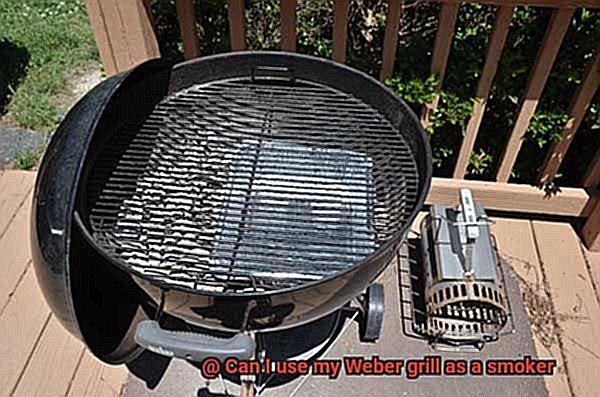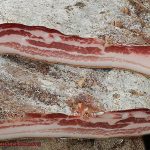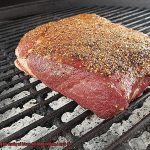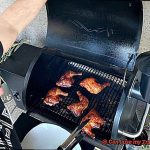Welcome to our blog, where we dive into the world of grilling and barbecue. Today, we’re tackling a question that’s been on the minds of countless grill enthusiasts: Can I use my Weber grill as a smoker?
We’ve all been there, catching a whiff of mouthwatering smoked meats as we pass by our neighbor’s yard. The slow cooking process that infuses flavors and creates tender, juicy results is simply irresistible. But what if you don’t have a fancy smoker?
Fear not. Turns out your trusty Weber grill can do double duty as a smoker. With a few simple techniques and adjustments, you can unlock a whole new realm of smoky goodness right in your own backyard.
In this blog post, we’ll show you how to transform your Weber grill into a smoker. We’ll cover everything from the types of Weber grills that work best for smoking to the necessary equipment and different smoking methods you can try.
So whether you’re an experienced pitmaster looking to expand your skills or just a grilling enthusiast eager to try something new, join us on this flavor-filled journey. Get ready to take your outdoor cooking game to new heights and impress your loved ones with delicious, smoky creations that will keep them coming back for more.
Stay tuned for our next post where we’ll dive into the step-by-step process of using your Weber grill as a smoker. It’s time to fire up those taste buds and get ready for some seriously tasty barbecue.
Contents
What is a Smoker?
Grilling is more than just cooking; it’s an immersive journey that tantalizes our senses. If you’re ready to take your grilling game to new heights and infuse your dishes with mouthwatering smoky flavors, then it’s time to explore the world of smokers. In this article, we will delve into what a smoker is, its role in grilling, and specifically how a Weber grill can be transformed into a powerful smoking machine.
What is a Smoker?
A smoker is a culinary apparatus designed to slow-cook food at low temperatures over an extended period, infusing it with delectable smoky flavors. Comprising three main components—a firebox, water pan, and cooking chamber—a smoker creates a controlled environment that indulges your taste buds.
Types of Smokers:
- Offset smokers: Enable indirect heat and smoke circulation for consistent cooking.
- Vertical water smokers: Feature stacked racks for efficient food placement.
- Electric smokers: Combine convenience with simplicity, making them ideal for beginners.
- Pellet smokers: Offer precise temperature control through digital mechanisms, ensuring optimal results.
Advantages of Smoking:
Smokers offer distinct advantages over traditional grilling methods:
- Tender results: Slow cooking breaks down tough connective tissues in meat, resulting in succulent dishes.
- Moisture retention: Low temperatures prevent excessive charring or drying out of food, ensuring moist and juicy results.
- Signature smoky flavors: The infusion of smoky nuances adds a unique taste that cannot be replicated by other techniques.
Using a Weber Grill as a Smoker:
Yes, you can transform your trusty Weber grill into a smoker. With some modifications and techniques, you can achieve incredible smoking results right in your own backyard. Here’s how:
Create a controlled indirect heat environment using the two-zone cooking setup. Place charcoal on one side of the grill for a hot zone and leave the other side empty for a cool zone, perfect for smoking.
Maintain consistent temperature by using a thermometer and adjusting airflow accordingly.
Enhance the smoky flavor by adding wood chips or chunks to your charcoal.
Can You Use a Weber Grill as a Smoker?
With a few simple techniques, you can transform your grill into a versatile and effective smoker. In this comprehensive guide, we will walk you through the steps to create mouthwatering, smoky dishes that will impress your friends and family.
Understand the Basics:
Weber grills are ideal for smoking due to their adaptable design and features. The key to successful smoking is creating indirect heat and controlling the temperature effectively.
Set Up Two-Zone Cooking:
To achieve indirect heat, position charcoal or wood chips on one side of the grill and place the food on the other side. This two-zone cooking technique ensures even smoking and prevents direct flare-ups.
Control the Temperature:
Regulating the temperature inside the grill is crucial for achieving perfect smoke-infused dishes. Adjust the airflow through the vents to control the temperature. Optimal smoking temperature usually ranges between 225°F and 275°F. Use a reliable thermometer to accurately monitor the temperature throughout the smoking process.
Consult Your Manual or Online Resources:
Different Weber grill models may require specific setups for smoking. To ensure you are using your grill correctly, refer to your owner’s manual or online resources for model-specific instructions.
Enhance Your Experience with Accessories:
Take your smoking experience to another level by exploring additional accessories like smoker boxes or smoking attachments that can enhance flavor and smoke production. These add-ons are designed to create a more authentic smoky taste and can be a worthwhile investment for serious smoking enthusiasts.
Prepare Your Food:
Before placing your food on the grill, marinate or season it to infuse it with additional flavor. Experiment with different wood chip varieties like mesquite, hickory, or applewood to create unique taste profiles that complement your chosen ingredients.
Setting Up the Two-Zone Cooking System
The two-zone cooking system on your Weber grill is the key to achieving smoky perfection in every bite. This technique provides a delicate balance between direct and indirect heat, giving you full control to smoke your food to tantalizing perfection. In this comprehensive guide, we will walk you through setting up a two-zone cooking system step by step, allowing you to impress your friends and family with mouthwatering flavors.
Step 1: Preparing the Grill
To start, ignite your charcoal or turn on the gas burners, making sure all vents are open. Arrange the charcoal briquettes in a two-zone configuration: heap more coals on one side for direct heat, while keeping fewer coals on the other side for indirect heat. For gas grills, adjust the burners to create a similar hot zone and cooler zone effect.
Step 2: Adding Smoke
Infusing your food with that signature smoky flavor is essential. Soak your smoking wood chips or chunks in water for at least 30 minutes, allowing them to smolder and produce aromatic smoke instead of burning rapidly. Place the soaked wood chips directly onto the coals or utilize a smoker box for gas grills. The result? Unforgettable smokiness that will elevate your dishes to new heights.
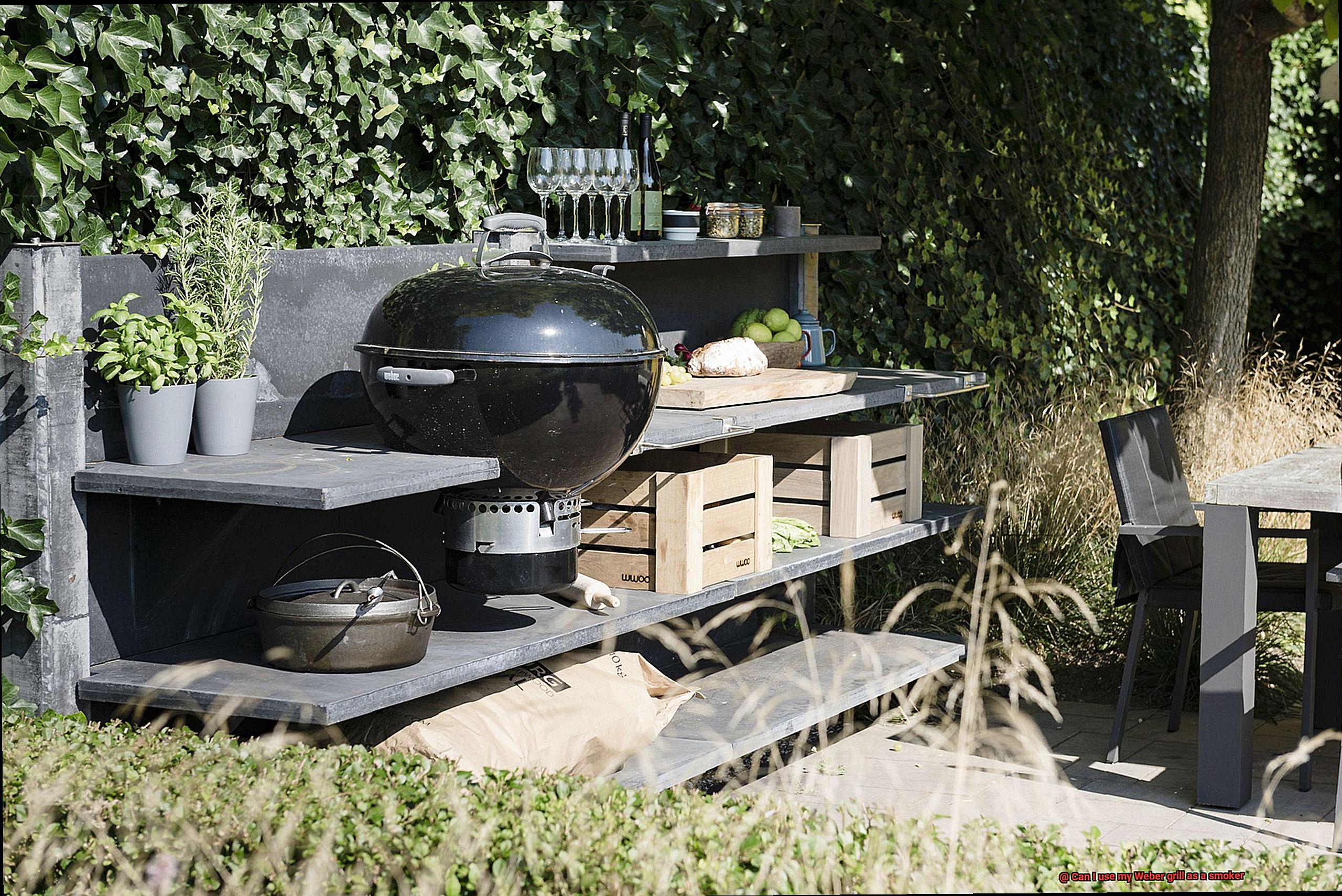
Step 3: Preparing Your Food
Enhance the flavors of your meat with a dry rub or marinade. Let it sit for at least an hour before grilling to allow the flavors to penetrate deeply. For vegetables or fish, a simple seasoning of salt, pepper, and olive oil will provide a delightful taste.
Step 4: Setting Up the Grill
The key to achieving perfectly smoked food lies in proper placement. Position your food on the cooler side of the grill, away from direct heat. This allows for slow cooking and ensures optimal smoke penetration. Close the lid of your Weber grill to create a smoky chamber that traps the flavors and maintains a consistent temperature.
Step 5: Monitoring the Temperature
To ensure your food reaches the desired internal temperature, invest in a reliable meat thermometer. Keep a vigilant eye on both sides of the grill, adjusting the charcoal or gas burners as needed to maintain the desired temperature and achieve culinary excellence.
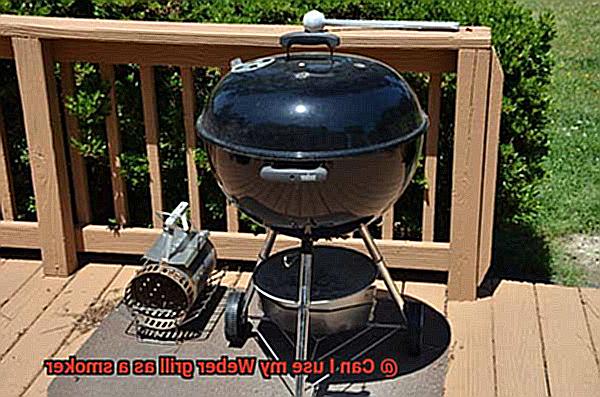
Step 6: Embrace Patience
While the aroma of smoky goodness may tempt you to peek, resist the urge to constantly check on your food. Opening the grill lid frequently can cause heat loss and disrupt the smoking process. Trust in the process and let your food smoke undisturbed for the recommended cooking time, allowing the flavors to develop into something truly extraordinary.
Controlling the Temperature
Controlling the temperature is the secret sauce to achieving mouthwatering results when using a Weber grill as a smoker. Whether you’re a grilling aficionado or just starting out, mastering temperature control will take your smoking game to new heights. So, let’s dive into the nitty-gritty of how to achieve that sweet smoking temperature.
First things first, let’s talk about the different types of Weber grills out there. Depending on your model, you may have built-in temperature gauges or need to use external thermometers. Knowing your grill’s capabilities will help you navigate the temperature control journey with confidence.
Now, let’s get fired up about airflow. Picture this: adjustable vents acting as your grill’s very own AC system. These vents allow you to regulate how much air enters and exits the grill, directly impacting the heat inside. It’s like playing with fire, but in a good way.
Fuel choice matters too, my friends. Charcoal and wood chips not only provide heat but also infuse that smoky flavor into your food. Adjusting the amount and placement of these fuel sources will directly impact your temperature control. It’s all about finding that perfect balance for each smoking session.
But wait, there’s more. Introducing the water pan. This little gem helps maintain a steady temperature by acting as a temperature regulator. By placing a water-filled pan between the heat source and your food, you prevent those dreaded hot spots and ensure an even smoke throughout. It’s like having a personal sous chef in your grill.
Now it’s time to play detective with a thermometer. Monitoring is key during the smoking process. Keep a close eye on the internal temperature of your grill, making adjustments as needed to stay within your desired range. Remember, perfection is in the details.
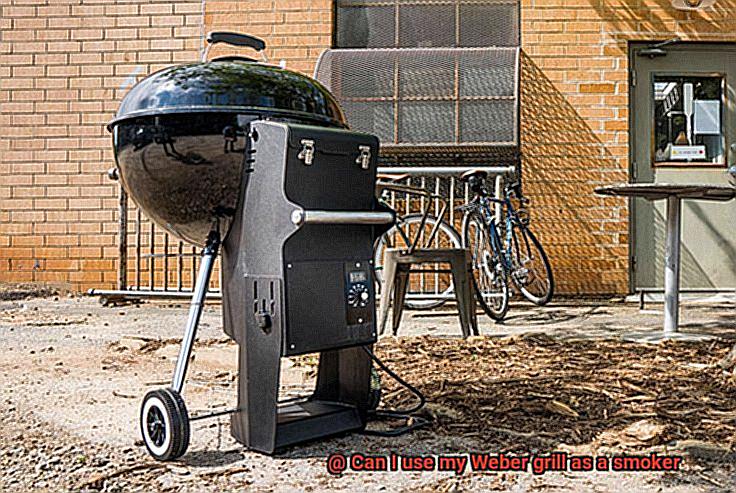
And finally, practice makes perfect. Each Weber grill has its own personality when it comes to temperature control. Start small, experiment, and get to know your grill’s quirks. With time and experience, you’ll become a master at maintaining that sweet smoking temperature.
Enhancing the Smoky Flavor
Indulging in food with that unmistakable smoky flavor is a culinary experience like no other. Whether it’s succulent smoked ribs, mouthwatering brisket, or perfectly grilled vegetables, the smokiness adds depth and complexity to every bite. If you’re ready to take your grilling game to new heights, using a Weber grill as a smoker is the secret to enhancing that smoky flavor. In this guide, we’ll delve into the techniques and tips that will help you master the art of creating irresistible smoky dishes with your Weber grill.
Choosing the Right Wood:
The choice of wood can make or break your smoking experience. Each type of wood brings its unique flavors to the table. Popular options like hickory, mesquite, applewood, and cherrywood all contribute their own distinct characteristics. Soak wood chips or chunks in water for about 30 minutes before use to create more smoke and intensify the smoky flavor.
Marinades, Rubs, and Brines:
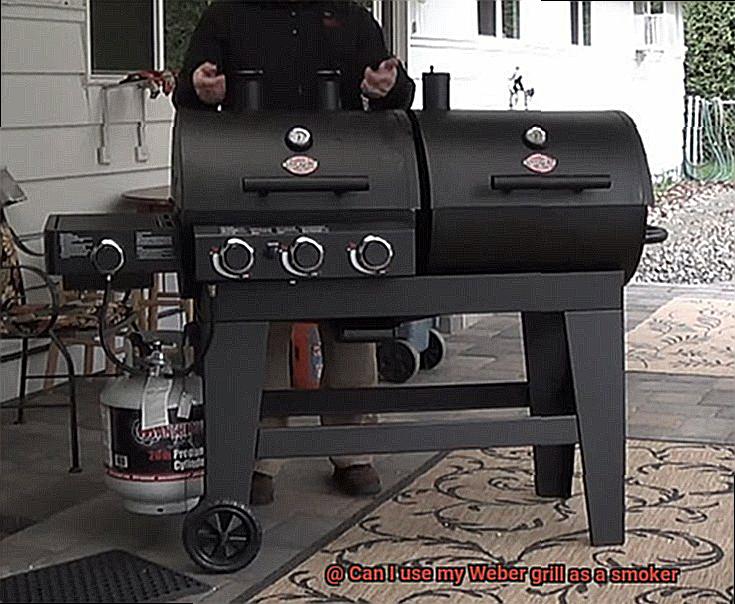
Infusing your meat with a smoky flavor starts even before it hits the grill. Consider using marinades or brines that contain smoky ingredients like liquid smoke or smoked paprika. Applying them generously to your meat will impart that rich smoky taste. Don’t forget about rubs. A blend of herbs, spices, and smoked ingredients like smoked salt or paprika can create a mouthwatering crust with a pronounced smoky flavor.
Indirect Grilling Techniques:
To maximize the smoky flavor, employ indirect grilling techniques on your Weber grill. This involves placing the food on one side while keeping the heat source on the other side. By doing so, you allow for slower cooking and more exposure to the smoke, resulting in a stronger smoky flavor.
Monitoring Temperature:
Maintaining a consistent temperature is crucial when using a Weber grill as a smoker. Aim for around 225-250 degrees Fahrenheit to ensure slow cooking and optimal smoke absorption. Use a thermometer to keep track of the temperature inside the grill and make any necessary adjustments.
Resting Time:
Once your food is cooked to perfection, resist the temptation to dig in immediately. Allowing it to rest for a few minutes before serving will allow the flavors to meld together, resulting in a more pronounced smoky taste.
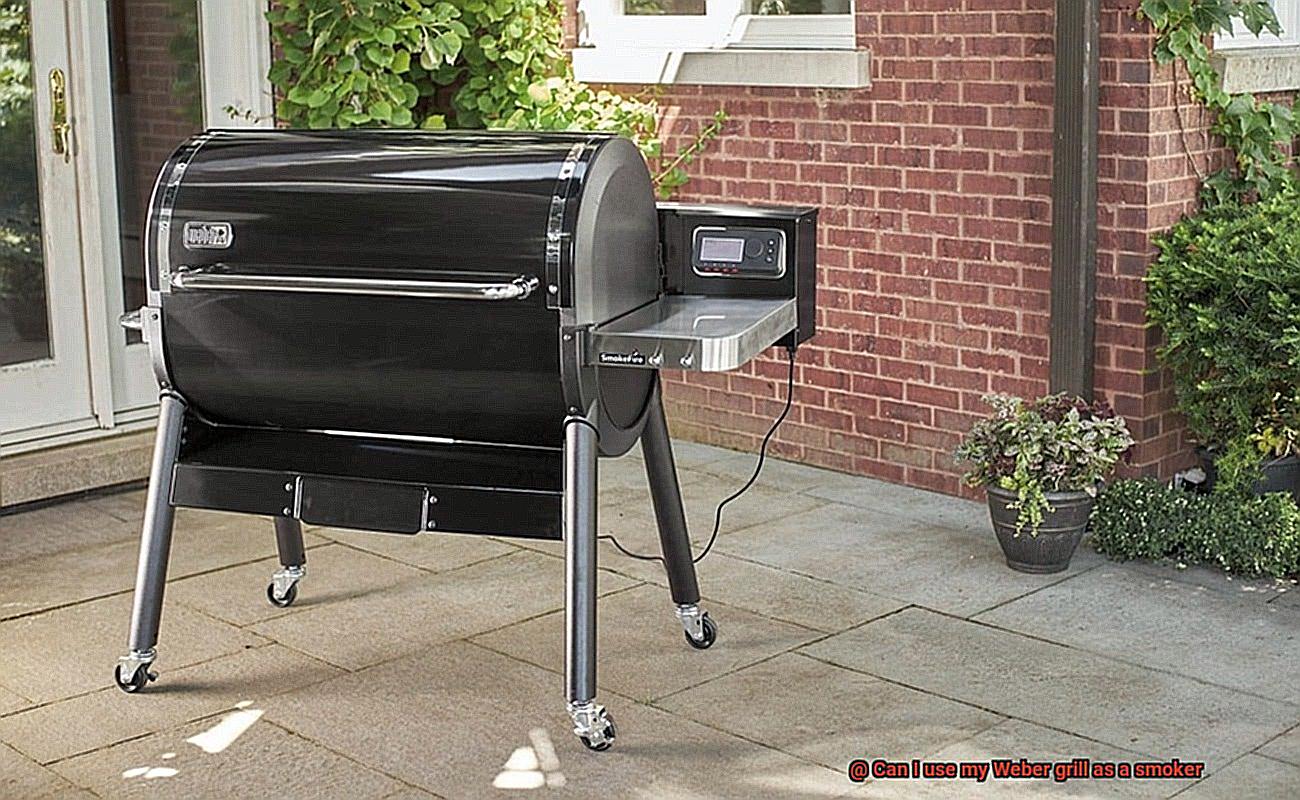
Drawbacks of Using a Weber Grill as a Smoker
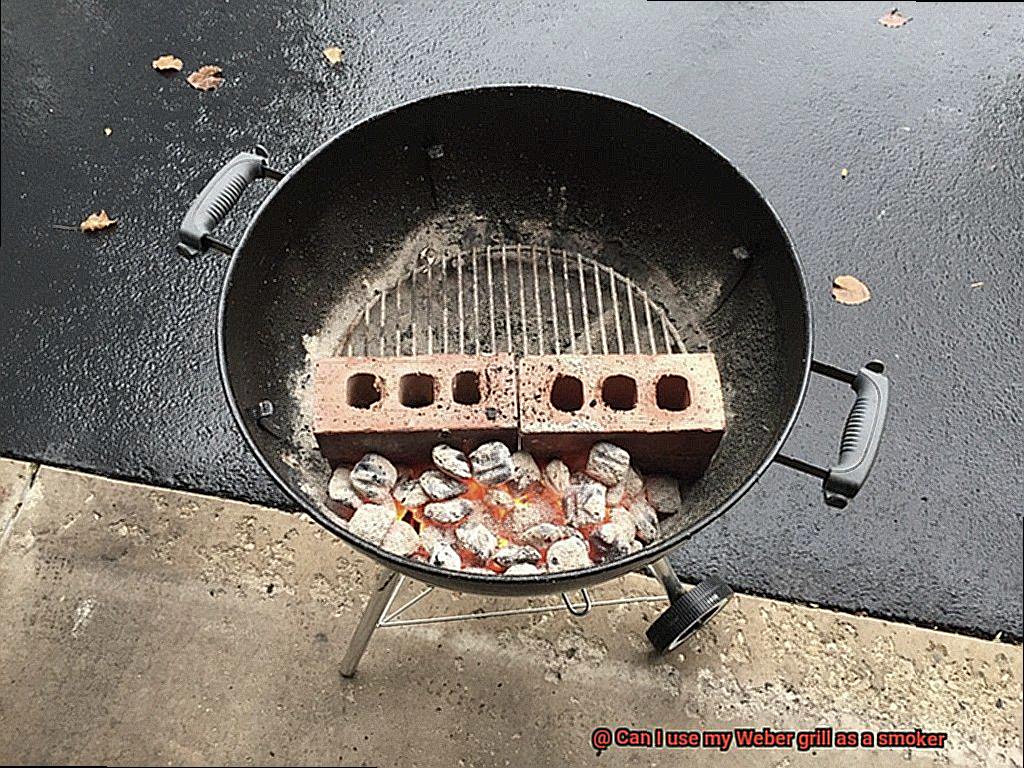
It’s important to be aware of the drawbacks that come with this approach. This article will explore the limitations of using a Weber grill for smoking, including difficulties in temperature control, limited cooking space, challenges with smoke circulation, charcoal management issues, and the lack of smoking accessories. By understanding these drawbacks, you can make an informed decision about whether using a Weber grill as a smoker is worth it.
Temperature Control:
Maintaining consistent temperatures is crucial for the low and slow cooking process required for smoking meats. Unfortunately, Weber grills lack the precise temperature control mechanisms found in dedicated smokers. Without these mechanisms, it can be challenging to achieve and maintain the ideal smoking temperature.
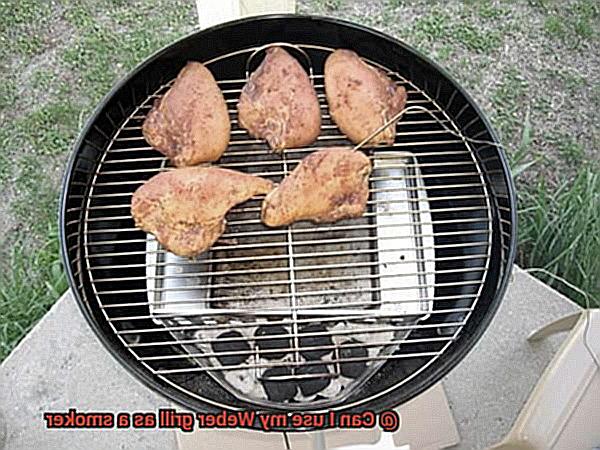
Limited Cooking Space:
Weber grills typically have smaller cooking spaces compared to dedicated smokers. This limited cooking space can be inconvenient if you plan to smoke large quantities of meat or multiple cuts simultaneously. It may also pose challenges when hosting gatherings or parties where you need to smoke a significant amount of food.
Smoke Circulation:
Proper smoke circulation is essential for infusing the desired smoky flavor into your meats. However, Weber grills may not offer optimal smoke circulation due to their design. Gaps or openings in the grill can allow smoke to escape, resulting in less flavorful results compared to dedicated smokers that are specifically built to channel smoke around the food.
Charcoal Management:
Charcoal is commonly used as the fuel source for both grilling and smoking on Weber grills. However, managing charcoal for smoking can be more challenging compared to dedicated smokers. Weber grills may lack the airflow and heat retention features that are purpose-built for smoking, making it trickier to maintain consistent heat levels and prevent flare-ups.
Limited Smoking Accessories:
Weber grills may not offer the same range of smoking accessories as dedicated smokers. Water pans, multiple racks, and other features that enhance the smoking process may be absent or limited on a Weber grill. This limitation can restrict your ability to experiment with different smoking techniques and limit the variety of foods you can smoke.
Starting with Smaller Cuts of Meat or Poultry
If you’re looking to infuse your meats and poultry with mouthwatering smoky flavors, using a Weber grill as a smoker is a game-changer. But before you dive into smoking that big ol’ brisket, it’s wise to start with smaller cuts of meat or poultry. Here’s why:
- Even Cooking: Smoking requires longer cooking times, and larger cuts may not cook evenly throughout. To ensure tender and juicy meat, start with smaller cuts such as chicken wings, pork chops, or fish fillets. These cuts cook quickly and evenly, guaranteeing delicious results every time.
- Temperature Control: As a beginner, mastering temperature control can be challenging. Luckily, smaller cuts are forgiving when it comes to maintaining a steady temperature in your grill. By starting small, you can practice making adjustments and learn how to maintain the ideal smoking temperature without risking overcooking or drying out larger pieces of meat.
- Flavor Experimentation: Starting with smaller cuts allows you to unleash your creativity with flavors and seasonings. With faster cooking times, you can try out various marinades, rubs, or wood chips for smoking. This experimentation will help you find the perfect combination that tantalizes your taste buds.
- Delicious Results: Don’t underestimate the power of smaller cuts – properly smoked chicken wings or pork chops can be incredibly flavorful and satisfying. Starting with smaller cuts doesn’t mean compromising on taste; it allows you to hone your skills and produce mouthwatering results from the get-go.
Once you’ve gained confidence and experience with smaller cuts, you can gradually move on to larger pieces of meat or poultry. Imagine smoking a whole chicken or that coveted brisket to perfection. But for now, embrace the learning process and start small.
Tips and Techniques for Smoking on Your Weber Grill
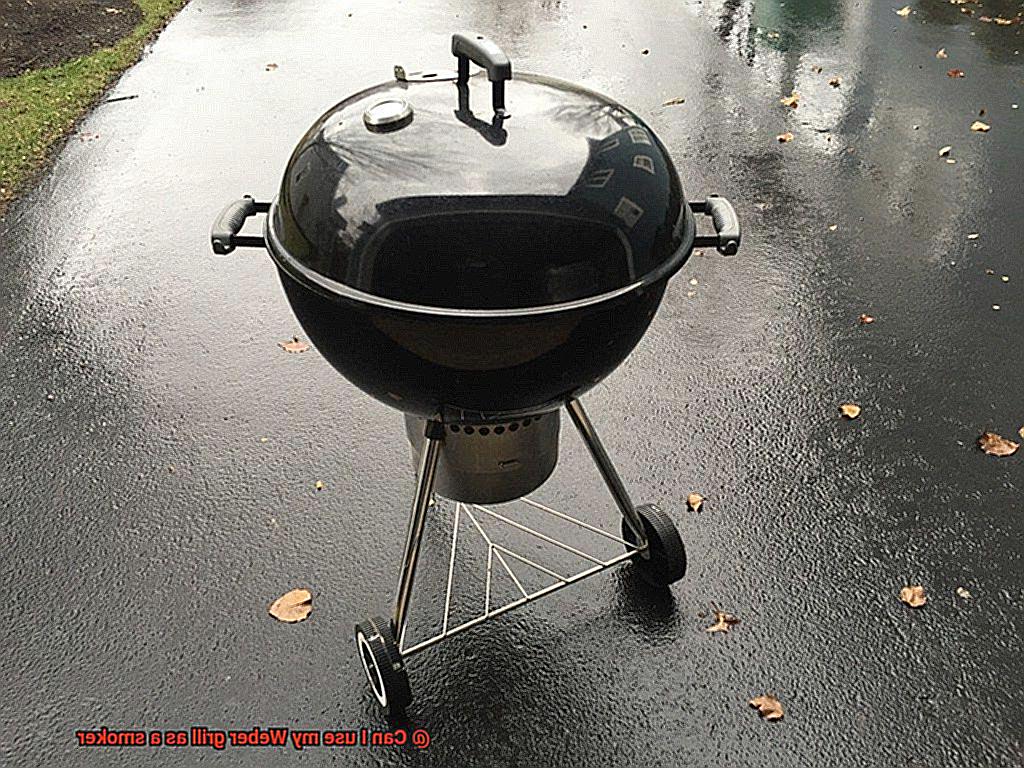
Smoking food on a Weber grill can take your backyard cooking to the next level. The combination of indirect heat and aromatic wood smoke creates flavors that are unmatched by any other cooking method. In this guide, we’ll explore the tips and techniques for smoking on your Weber grill, allowing you to create mouthwatering smoked dishes right in your own backyard.
Setting up for Success:
To transform your Weber grill into a smoker, it’s crucial to set it up for indirect cooking. This means placing the charcoal or briquettes on one side of the grill and a drip pan filled with water on the other side. The charcoal provides the heat, while the water pan helps regulate temperature and prevents the food from drying out. This setup creates a hot zone and a cool zone, perfect for slow smoking.
Soaking Wood Chips or Chunks:
Before using wood chips or chunks, soak them in water for at least 30 minutes. Soaking helps generate more smoke and prevents them from burning too quickly. Once they are ready, place them directly on the charcoal or use a smoker box if available. The smoldering wood will release delicious smoke that infuses your food with irresistible flavors.
Temperature Control:
Maintaining a consistent temperature is crucial for successful smoking. Use a thermometer to monitor the temperature inside the grill—aim for around 225°F to 250°F for optimal smoking. Adjust the airflow by partially closing the vents on the bottom and top of the grill to regulate oxygen flow, controlling the heat.
Choosing the Right Wood:
When smoking on your Weber grill, experiment with different types of hardwoods for unique flavors. Hickory, mesquite, apple, and cherry are popular choices that add distinct tastes to your food. Mix and match woods depending on your personal preference and the type of meat you’re smoking.
Creating a Makeshift Smoker Box:
If you don’t have a smoker box, don’t fret. You can easily create a makeshift smoker box using aluminum foil. Wrap soaked wood chips in foil, poke holes to allow smoke to escape, and place it directly on the charcoal or flavorizer bars if using a gas grill. This DIY method ensures an even distribution of smoke throughout the cooking process.
Patience is Key:
Smoking on a Weber grill requires time and patience. Low and slow is the name of the game when it comes to smoking. Allow your food enough time to smoke and cook thoroughly, as smoking times can vary depending on the type and size of the food being smoked. Consult specific recipes or guidelines for estimated smoking times.
Resting for Maximum Flavor:
Once your food is done smoking, resist the temptation to dig in immediately. Letting it rest for about 10 to 15 minutes allows the juices to redistribute within the meat, resulting in more tender and flavorful results. Cover the food with foil during resting to retain heat.
KQ1do5y_X7M” >
Conclusion
In conclusion, your Weber grill can indeed be used as a smoker.
With a few modifications and the right techniques, you can achieve delicious smoky flavors in your grilled dishes. By using indirect heat and adding wood chips or chunks for that signature smoky taste, you can transform your grill into a versatile cooking tool.
Experiment with different meats, vegetables, and seasonings to create mouthwatering smoked dishes that will impress your family and friends.

